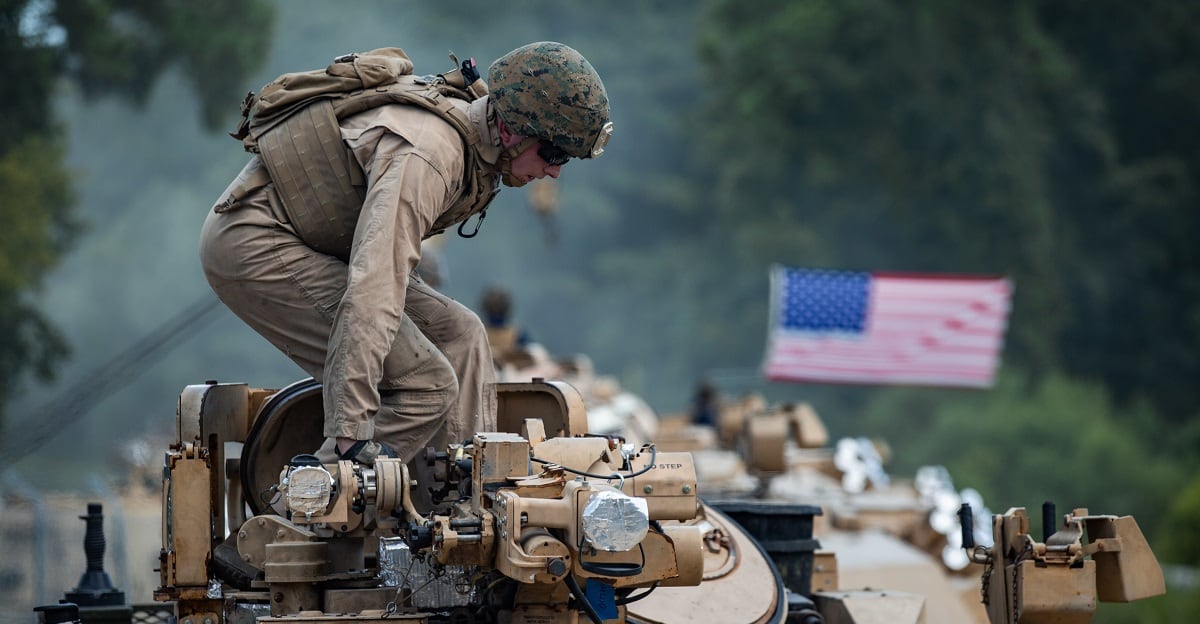The Marine Corps deactivated the historic 1st Tanks Battalion on Friday in a ceremony celebrating the storied unit’s historic past and “complicated relationship” with the wider Marine Corps.
The battalion was deactivated as part of Marine Corps Commandant Gen. David Berger’s larger restructuring of the Corps. With the deactivation at the Marine Corps Air Ground Combat Center Twentynine Palms, California, the Marine Corps officially shut down its final battalion of active-duty tankers.
Even though the Corps’ needs led to the deactivation of its tanks, the final commander of 1st Tanks said during the deactivation ceremony that he hopes the armored community will someday return and be ready to take on the mission — much like the first tankers did at the beginning of World War II.
“My solemn hope is that, should the need for armor ever arise again, that spirit that has guided this battalion for the better part of a century, although asleep, will rise again and support that next generation of Marines just like it did on 1 November 1941,” Lt. Col. Benjamin Adams said during the ceremony.
RELATED

The commandant wants the service to get lighter, faster and more heavily armed in preparation for a potential future war with a near-peer, like China or Russia.
Since taking over as the top Marine, Berger has been very open about the Marine Corps’ need to make cuts to afford new technologies, like ship-sinking missiles.
In March of 2020, Berger made it official that Marine tanks would be one of those cuts.
In the 14 months since the announcement the Marine Corps has shipped nearly all its tanks to the Army, with plans to complete the transfer by 2023, Marine Corps Times previously reported.
The 2nd Tanks Battalion was deactivated earlier in May at a ceremony on Camp Lejeune, North Carolina.
“From Iceland to Helmand, from 1941 to now, 2nd Tanks has been the spearhead for the 2nd Marine Division, every clime and place,” Maj. Gen. Francis Donovan, commander of the 2nd Marine Division, said at the 2nd tanks deactivation ceremony on May 5.
The 1st Tanks deactivation also glorified the battalion’s past.
The Twentynine Palms, California, based battalion originally was activated at the onset of World War II and first saw action as it deployed alongside the 1st Marine Division at Guadalcanal in the Solomon Islands.
“Ten months after we were activated, company Able and company Baker landed on Guadalcanal, 7th of August 1942, and our legend was born,” Adams said during the ceremony, which was available to watch online.
“Infantry company commanders and battalion commanders would soon realize the power of the tank, infantry team,” he added.
Adams said the Corps had a “complicated relationship” with the battalion but wanted to focus the deactivation ceremony on the successes of the unit, not its deactivation.
Marine tankers have been given three options going forward: They can continue manning tanks by transferring to the Army, they can leave the Marine Corps early or they can change their military occupational specialty within the Marine Corps.
On the enlisted side, a total of 151 Marine tankers or tank repairers have requested a lateral move to a different MOS, 12 have requested early retirement, 121 have submitted a package for the Voluntary Enlisted Early Release Program, or VERP, 72 have requested a transfer to the Army and 230 are eligible for “force shaping,” Maj. Jordan Cochran, a spokesman for Marine Corps Manpower and Reserve Affairs, told Marine Corps Times.
On the officer end, 89 have requested a lateral move, two have requested early retirement, two have requested early release, none have requested a transfer to the Army, while 23 remain eligible for “force shaping,” Cochran said.




